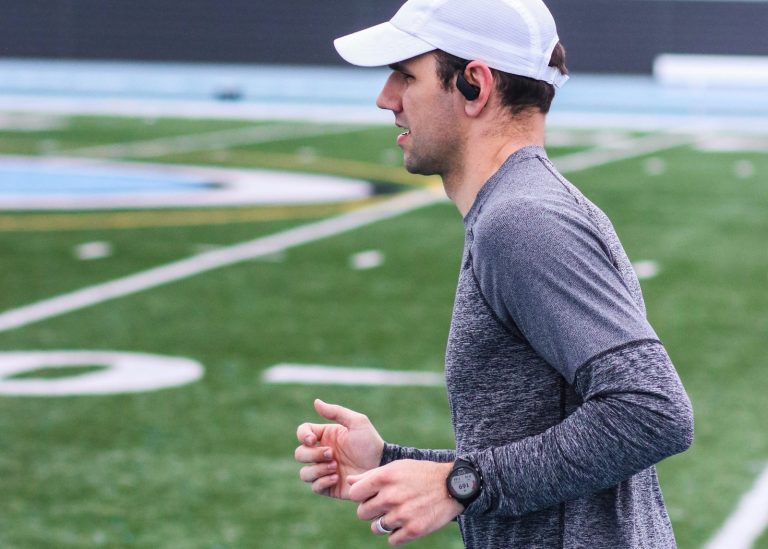
Medically reviewed by
Christina J. Collura, DO, MPH
Many of us start each new year with resolutions to get in better shape or become healthier. As gyms fill with new members and people take up new workout routines, those with asthma often face a unique challenge: how to stay active without triggering breathing difficulties.
You may find that some days you can do moderate exercise with no problems, while other times, a simple jog or treadmill session leaves you struggling to breathe within minutes. The good news? With proper understanding and management, asthma doesn’t have to prevent you from maintaining an active, healthy lifestyle.
Understanding Exercise-Induced Asthma
Exercise-induced asthma, also known as exercise induced bronchoconstriction, affects many people worldwide. According to the American Academy of Allergy, Asthma & Immunology (AAAAI), around 300 million people globally have asthma. However, it’s important to understand that not everyone with asthma experiences exercise-induced symptoms, and some people only experience asthma symptoms during exercise, known as exercise induced asthma..
Common Symptoms
Exercise-induced asthma typically presents with several key symptoms:
- Wheezing during or after exercise
- Coughing
- Chest tightness
- Difficulty breathing
One common concern many patients have is how asthma affects heart rate during exercise. When you have an asthma episode, your heart rate often increases as your body works harder to move air through constricted airways. This elevated heart rate during exercise can be particularly noticeable if you have exercise induced asthma. Understanding the connection between asthma during exercise and heart rate is important for managing your condition effectively.
These symptoms usually appear within 5-10 minutes after starting exercise, though for some people, it may take up to 20 minutes. While symptoms typically improve with rest, they can sometimes reappear 4-8 hours after the workout.
Understanding Your Triggers
Several factors can worsen exercise-induced asthma symptoms. According to the American College of Allergy, Asthma, & Immunology (ACAAI), common triggers include environmental irritants such as chlorine and air pollutants. Additionally:
- Cold air and low humidity: These conditions increase heat loss from airways
- Hot, humid weather: Can make breathing more difficult
- Nasal congestion: Prevents proper air warming and humidification
- Air pollutants: Including sulfur dioxide
- High pollen counts: Particularly problematic during spring and fall
- Viral respiratory infections: Can increase severity of symptoms
Safe Exercise Practices for Asthma Sufferers
Activity Selection
Different types of exercise can have varying impacts on asthma symptoms. Here’s a breakdown from most likely to least likely to induce asthma:
- Free running (most likely)
- Treadmill running
- Bicycling
- Swimming (least likely)
Swimming is often considered an ideal activity for people with asthma due to several factors:
- Warm, humid atmosphere
- Year-round availability
- Horizontal position helps mobilize mucus
- Upper body muscle toning benefits
Other recommended activities include:
- Sports with short energy bursts (baseball, football, wrestling)
- Short-distance track and field events
- Golf
- Gymnastics
- Surfboarding
Understanding the Asthma-Heart Rate Connection
During an asthma episode, particularly during exercise, several factors can cause your heart rate to increase:
- Airways Constriction: When asthma causes your airways to narrow, your heart works harder to help your lungs get enough oxygen, which can cause an elevated heart rate.
- Exercise Response: While exercise naturally increases heart rate, exercise induced asthma can cause your heart rate to rise higher than normal as your body struggles with breathing efficiency.
- Stress Response: The anxiety and stress of experiencing asthma symptoms can also contribute to increased heart rate during exercise.
If you notice that your heart rate seems unusually high during exercise, or if you experience a combination of high heart rate and asthma symptoms, it’s important to discuss this with your healthcare provider. They can help determine whether your increased heart rate is a normal response to exercise or a sign that your asthma needs better management.

Does Asthma Affect Resting Heart Rate?
Many patients wonder about their heart rate when they’re not exercising. While asthma primarily affects the respiratory system, poorly controlled asthma can sometimes impact resting heart rate. When asthma is well-managed, most patients maintain a normal heart rate for asthma patients, which typically falls within the same range as individuals without asthma (60-100 beats per minute for adults at rest).
However, if your asthma is not well-controlled, you may experience:
- Slightly elevated resting heart rate due to ongoing inflammation
- Heart rate spikes during asthma flare-ups
- Increased heart rate variability
Working with your allergist to optimize your asthma management can help ensure your resting heart rate remains in a healthy range. This is especially important for patients wondering “does asthma affect resting heart rate” – the answer depends largely on how well your condition is managed.
Exercise-Induced Asthma Prevention
Prevention and Asthma Management Strategies
Pre-Exercise Preparation
- Perform proper warm-up exercises
- Use prescribed pre-exercise medications as directed
- Consider using pursed lip breathing techniques
Environmental Considerations
- Avoid outdoor exercise during extreme temperatures
- Check pollen counts before outdoor activities
- Exercise later in the day when pollen counts are typically lower
- Consider wearing a face mask or scarf in cold weather
Medical Management
Work with an allergist to create a personalized asthma management plan. Consider preventive medications such as:
- Albuterol
- Metaproterenol
- Terbutaline
- Cromolyn sodium
- Nedocromil
- Theophylline
Ongoing Monitoring
- Have regular check-ups with your allergist
- Adjust your management plan as seasons change
- Monitor your heart rate during exercise
- Track how different activities affect your breathing and heart rate
- Listen to your body and modify activity as needed
Heart Rate Management
- Use a heart rate monitor during exercise to track your response
- Learn to recognize when an elevated heart rate might signal oncoming asthma symptoms
- Work with your healthcare provider to understand your target heart rate zones
- Know when to slow down or stop based on your heart rate and breathing
Professional Testing and Diagnosis
If you suspect you have exercise induced asthma or sports induced asthma, proper diagnosis typically involves:
- Detailed patient history
- Breathing tests at rest
- Post-exercise breathing evaluation
- Specialized testing (may include cycling, running, or treadmill exercises)
The Importance of Proper Medical Care
While exercise induced asthma presents challenges, it’s crucial to maintain physical activity for overall health. With proper medical care and management, most people with asthma can participate in their chosen activities successfully. Many athletes with asthma have even excelled in demanding sports like basketball and long-distance running.
Ready to Take Control of Your Exercise-Induced Asthma?
At Carolina Asthma & Allergy Center, we specialize in helping patients manage their asthma while maintaining active lifestyles. Our experienced team can create a personalized management plan that works for your specific needs and activities.
Don’t let exercise induced asthma hold you back from achieving your fitness goals. Contact Carolina Asthma & Allergy Center today to schedule an appointment or learn more about our comprehensive asthma treatments.



